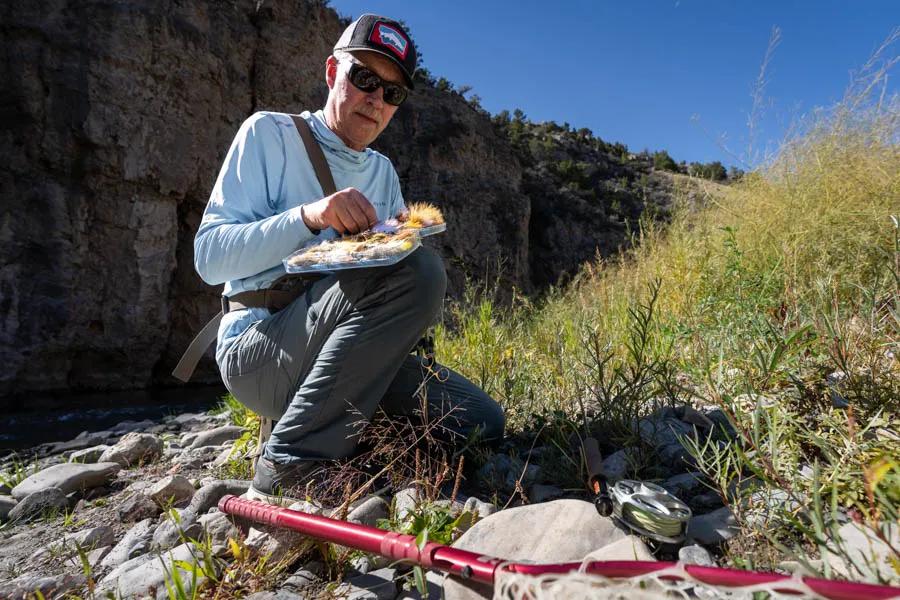
Streamer fishing can be one of the most exciting ways to catch fish when fly fishing. It is also a successful way to target large trout. Anglers who regularly fish streamers know the rewards may not come as easily as when fishing tandem nymph rigs or when a hatch is thick and the trout are hungry. From the Madison River and it's "50-Mile Riffle" to the legendary Yellowstone River to the tailwater consistency of the Missouri River or far-off places like Chile's Rio Baker, fly fishing with streamers is a skill any angler can improve upon. The thrill of feeling a fish hit your streamer is often worth the extra effort needed to learn some specific technical skills. Here are 5 Tips for Better Streamer Fishing and to help you catch more, and bigger, fish.
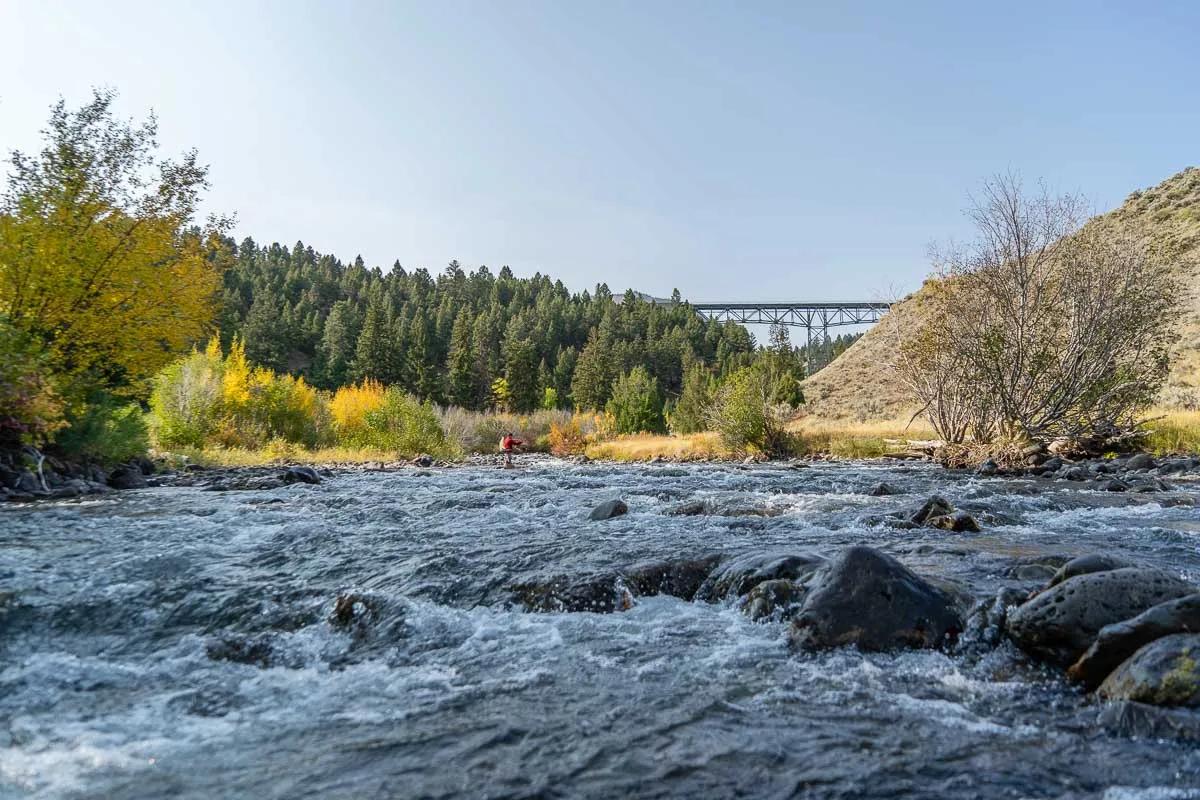
Cover More Water and Catch More Fish
Fishing streamers is a great way to target big, aggressive fish, but big fish don’t swim and eat just anywhere. For example, on the Smith River and throughout its rugged canyon, the aggressive brown trout aren't everywhere. You have to go find them, and covering miles of water is the best way to do it. Plenty of ambitious, average size fish that will get your hopes up at first eat streamers too, but on most Montana rivers, on most days, there are less fish willing to chase a streamer as there are willing to casually eat a nymph. When fishing a streamer be prepared for sudden strikes to happen after the first few strips during a retrieve…or never. If you are lucky, the fish can be big. It is essential to cover a lot of water and actively hunt for these big fish. When covering water be sure to plan your approach carefully so you don't spook a trophy size trout. Be willing to change up how you retrieve the fly often. Then, move on. The next spot could be the one.
Streamer fishing out of a boat can be fun and fast paced. You can cover a lot of water and increase your chances of crossing paths with aggressive fish. When walk-and-wade fishing, pack light to make it easier to fish a substantial amount of water. If you commit to only throwing streamers, pare down your gear to the essentials--some flies, some tippet, and a spare leader or two. Be sure to read a recent blog on Choosing the Correct Leader to Catch More Fish. Bring water and lunch. Work your way downriver so the current can help you cover water. Being on foot allows you to fish areas more thoroughly, and more easily experiment with different retrieves and flies, which can sometimes make all the difference.

Experiment with Different Types of Retrieves
Sometimes the fish respond really well to one particular type of retrieve, while having seemingly no interest in any others, even with the same fly. For example a fast retrieve is probably better on a small stream than a large river like the Missouri River where a trout has more time to chase down a baitfish. Because of this, mess around with your retrieve. Do it systematically and be conscious of how you retrieve your fly so that you can replicate a retrieve that prompts a strike. Imagine that with every retrieve you’re playing with a cat, and you want to elicit a reaction. Pay particular attention to the direction the fly is facing in the water and the type of movement you’re giving the fly. Trout will often strike on a pause in the retrieve, so if you stop moving the fly be ready for a hit. There are a variety of specific types of retrieves out there - learn different ones and add them to your arsenal.
Develop a “live feed” in your head of what your fly is doing and where it is. Experiment with different types of retrieves by using a big bright streamer that you can see. This will allow you to see the action of the fly and you can know if the fly is doing what you want it to do. Consider adding a small, bright, “tracer” streamer a couple feet above a dark colored or deeply fished main streamer to help give you a visual clue about what is happening with your main fly.
Before you change your fly, give it a decent chance by fishing it facing in different directions and doing different things at different speeds. This is where the wading angler may have the advantage over the floaters, who only get one or two chances at most spots and often fall into doing the same retrieves. A lot of takes do come in the first few casts, but every once in a while the persistent wade fisherman with a hunch can finally elicit a strike.
Pair your methods with appropriate lines and leaders, which can significantly alter your fly’s depth and movement. Fly weight, profile, and materials also play an important role in streamer movement, so utilize different designs for your needs. A fly line with a low-stretch core will help you notice subtle ticks and strikes, and make the big ones feel electric.
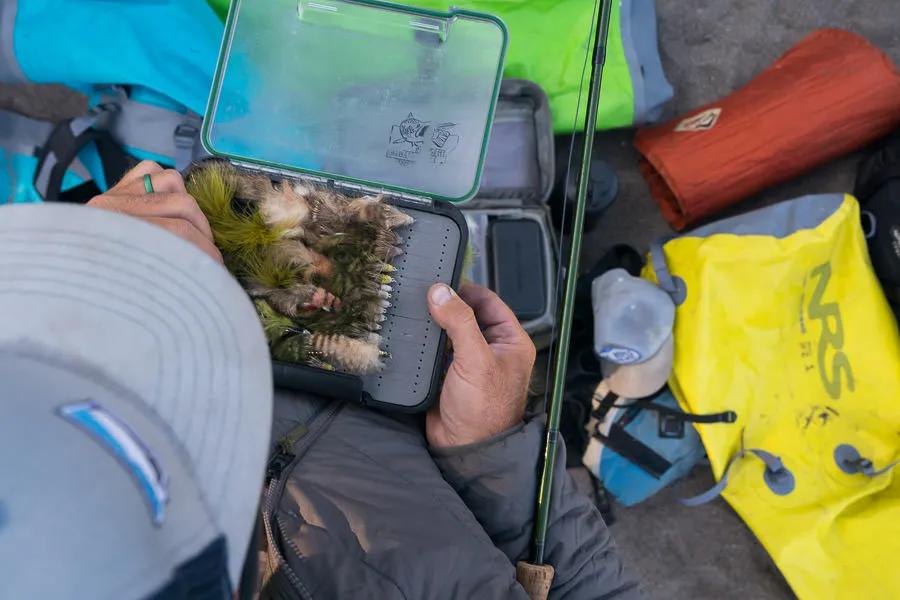
Choosing the Correct Color Can be Crucial
How often you should change flies when fishing streamers is uniquely personal...and every angler has their own answer. Some people think color and profile make the difference. Many anglers advocate switching flies as often as every 5, 10, or 15 minutes until finding something that elicits a reaction from a fish. Others argue it’s how and where the fly is fished that makes the most difference and they are reluctant to change flies often. For example, on many freestone rivers like the Boulder River anglers change flies less often than on a tailwater like the Bighorn River. Many Montana fly fishing guides on the Madison will fish McCunes sculpins nearly all season, for good reason. Many anglers just follow a semi-informed hunch and fall somewhere in the middle. When all is said and done it is best to choose what you have confidence in, but on some days color and size matters more than action and retrieve.
On bright days many anglers choose flashy, brightly colored flies. On darker, overcast days and early or late in the day when the light is low, darker colored patterns that produce a stronger silhouette can be more effective. This is generally considered a starting point but by no means a hard and fast rule. If you keep seeing fish chasing your fly but not eating it, adjust to a smaller fly. Then pick a larger fly that’s the same or similar to the fly that first gained some interest.
Sometimes large streamers meant to provoke a reactionary, defensive strike work great. When they don’t work, a “match the hatch” approach can be helpful for picking a streamer. Patterns that imitate a common food source like sculpins or crayfish can be extremely effective when fish are on the hunt. Sculpins are a common baitfish available for trout. At certain times of the year trout will ravenously key in on this clumsy prey, which can make for phenomenal fishing. An olive or tan sculpin pattern is never a bad bet. At other times of the year trout will key in on crayfish, juvenile whitefish, dace, small trout, or leeches.
When fishing streamers, every day can serve up a variety of action--some days can be great, yet some days can be head scratchers. However, on any given day there is often a most productive color and general size/style of pattern for the day. Figuring out this combination is one of the most important factors in finding success when fly fishing with streamers. If you cast your fly in a variety of ways in enough good water and you can be sure it hasn’t triggered a response from fish…then change it up.
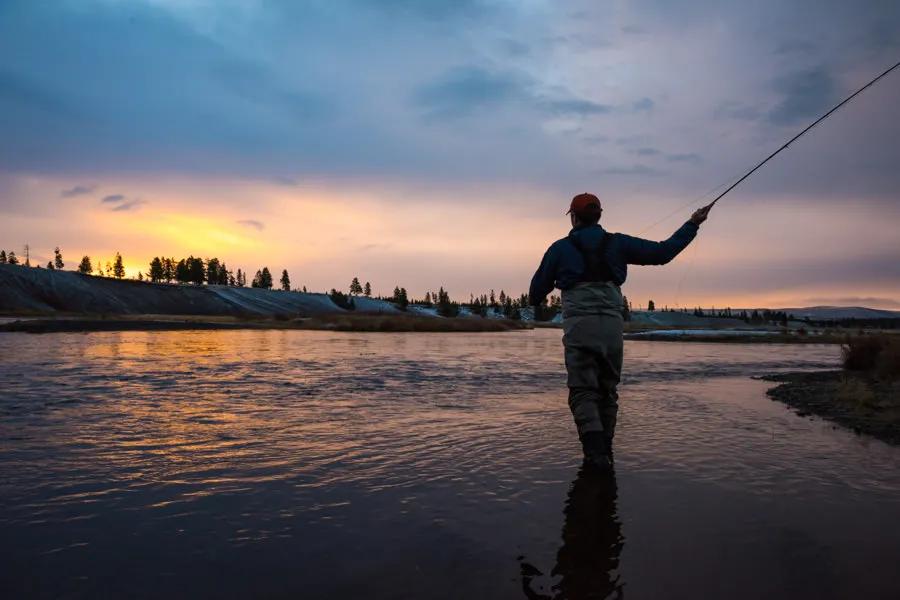
Fish at Prime Times
Streamer fishing tends to be the most productive during periods of lower light. The fish feel safer under the cover of darkness when birds and other predators cannot see as well. The best streamer fishing is typically early in the morning, late in the evening, and on overcast days. Check the weather forecast or local fishing reports and plan your fishing time accordingly to increase your odds. Fishing streamers in fall and spring is also generally more productive than mid summer as the spawning trout are more aggressive, don’t have as many aquatic insects to eat, and on some rivers and creeks often see less angling pressure.
Baitfish tend to be more active during certain periods of the season. Planning your fishing during these more active times can be very productive. On the Madison River for example, sculpins tend to be active in mid-July. Some Montana fly fishing guides believe large fish get more aggressive and chase streamers as water temperatures increase in late summer. They believe this is due to trout wanting to consume high protein meals without expending the amount of energy required to eat thousands of tiny bugs.
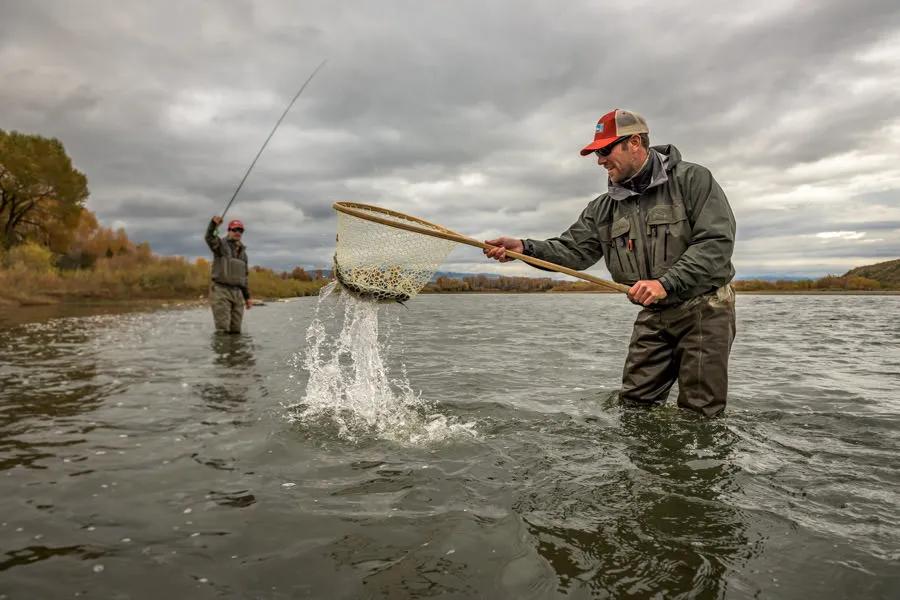
Be Persistent and Hope it Pays Off
When compared to other methods of fly fishing, fishing streamers is often a trade-off of quality over quantity. The more time you spend fishing streamers, the better your techniques will be, and the greater your chance of success. If you commit to fishing streamers you will get a few magical days when fish attack your streamer. You will even get a few days when persistence pays off and a big fish attacks your streamer. There is the pay-off--that rare day when a trophy-sized trout attacks your streamer and you set the hook at the right time and it all comes together.
Because streamer fishing has less hook-ups compared to subsurface nymph fishing, it is easy to become complacent. Staying disciplined while stripping your streamer through yet another spot after not receiving much action for a while takes persistence. Remember, the longer you go without a strike, the closer you are to getting another one…and a big strike can occur at any moment. Keep tight to your fly, keep a firm grip on the line as you strip, and be ready to set the hook in that sudden, violent flurry of activity when a fish strikes. This is often as soon as the fly hits the water, or within the first few strips, so get tight to your fly as soon as you can and be ready. If it gets slow, experiment with different types of retrieves--try some fast, some slow, and some medium speed.
Like any fly fishing method, fishing streamers requires a lot of practice and is something you can continually improve your skills. As you get more comfortable fishing streamers you’ll expand your comfort zone with different retrieves and get better at manipulating your fly in the water, which will lead to more strikes and catching more fish.
Want more help? Check out our video on High Water Streamer Tactics
